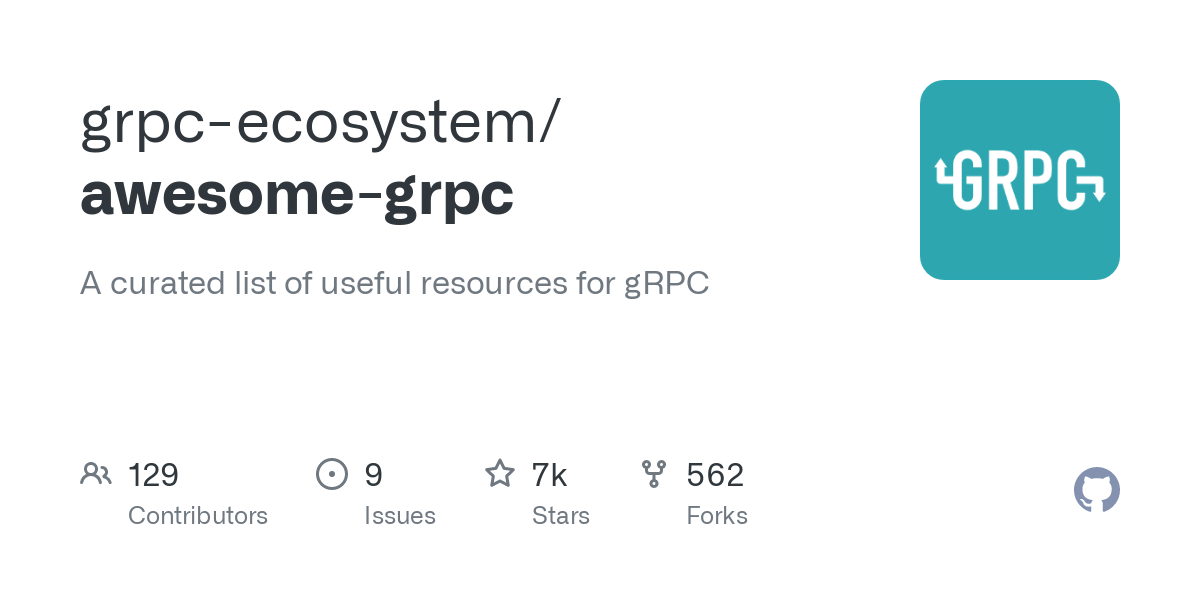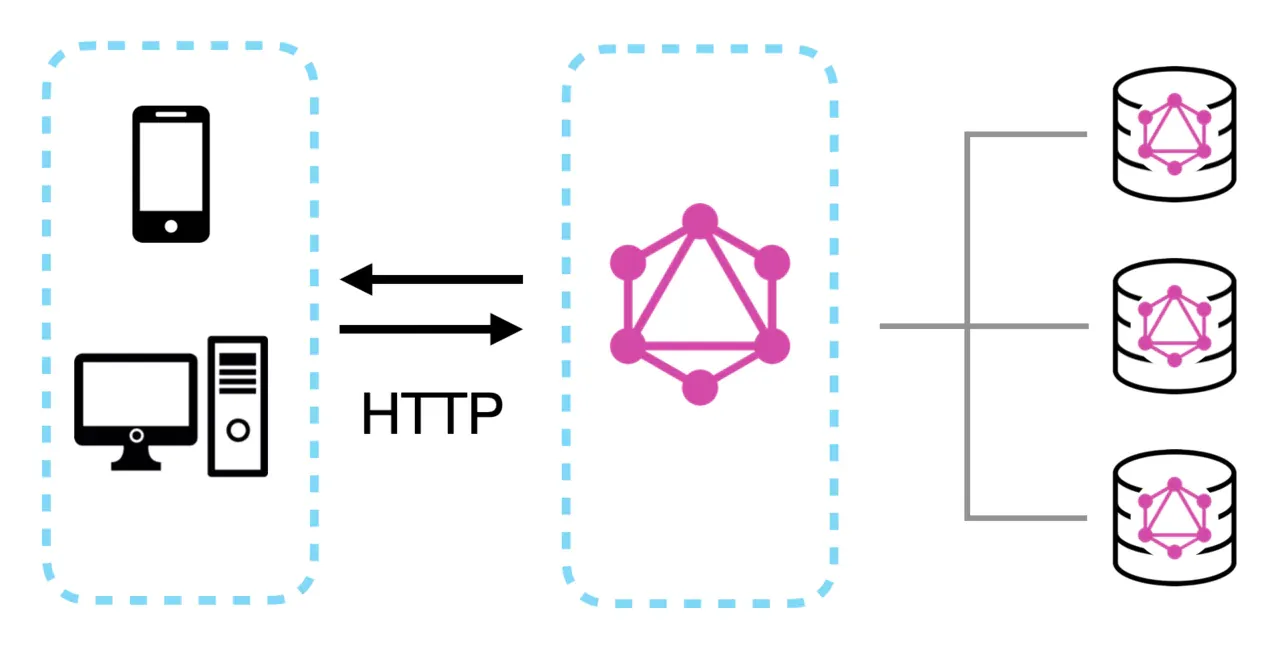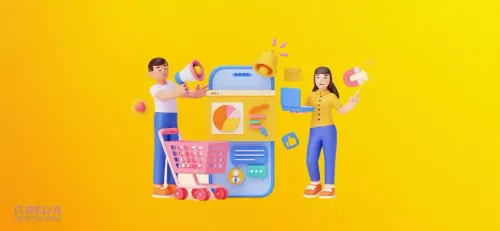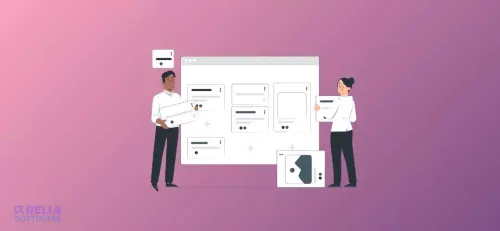Table of Contents
The ever-evolving landscape of software development demands efficient and flexible solutions for building APIs. Two leading contenders have emerged: gRPC and GraphQL. Both offer unique strengths and cater to different use cases, leaving API developers pondering which one to choose for their projects.
This in-depth exploration delves into the intricacies of gRPC and GraphQL, dissecting their features, advantages, and ideal scenarios. In this blog, we'll delve into the intricacies of gRPC and GraphQL, comparing their features, strengths, and ideal scenarios, helping you make an informed decision for your next venture.
>> Read more: A type-safe backend using NestJS, Prisma, Pothos, and GraphQL
Understanding gRPC
In the fast-paced world of distributed systems and microservices architectures, efficient communication between services is paramount. Enter gRPC, a robust open-source Remote Procedure Call (RPC) framework developed by Google, designed to solve this challenge. We'll delve into the depths of gRPC, exploring its key features, strengths, and why it's become the go-to choice for modern API development.
Protocol Buffers (Protobufs)
- gRPC leverages Protocol Buffers (protobufs) as its Interface Definition Language (IDL) for defining services and message types.
- Protobufs offer a language-neutral, platform-neutral, extensible mechanism for serializing structured data.
- With protobufs, developers can define the structure of their data once and generate code in multiple programming languages, ensuring consistency across services.
Language and Platform Support
- One of gRPC's major strengths lies in its extensive language and platform support.
- It seamlessly integrates with popular programming languages like Java, Python, Go, and C++, making it accessible to a wide range of developers.
- This flexibility enables teams to build distributed systems using their language of choice, enhancing developer productivity and collaboration.
HTTP/2 Transport Protocol
- gRPC utilizes HTTP/2 as its transport protocol, unlocking a plethora of advanced features for efficient communication.
- HTTP/2 supports multiplexing, allowing multiple requests and responses to be sent asynchronously over a single connection, reducing latency and improving throughput.
- Additionally, HTTP/2 enables bidirectional streaming, empowering gRPC to handle real-time data processing and streaming scenarios with ease.
Speed, Efficiency, and Microservices
- Speed and efficiency are at the core of gRPC's design philosophy.
- By leveraging HTTP/2 and binary serialization with protobufs, gRPC achieves high-performance communication between services.
- This makes gRPC particularly well-suited for microservices architectures, where low latency and efficient data transfer are essential for maintaining scalability and reliability.
- With gRPC, developers can build lightweight, resilient services that seamlessly communicate with each other, enabling the rapid development and deployment of distributed systems.
- Utilizes HTTP/2 as its transport protocol, offering features like bidirectional streaming and multiplexing for high-performance communication.
gRPC is more than just an RPC framework; it's a testament to the power of modern distributed systems design. With its speed, efficiency, and support for microservices architectures, gRPC empowers developers to build scalable, resilient systems that meet the challenges of today's interconnected world.

Unveiling GraphQL
In the realm of modern API development, efficiency, flexibility, and adaptability are paramount. Enter GraphQL, a revolutionary query language and runtime for APIs that has transformed how developers approach data fetching and manipulation. In this article, we'll dive deep into the world of GraphQL, exploring its origins, unique features, and why it has become a game-changer for building dynamic and scalable applications.
Origins and Evolution
- GraphQL was born out of Facebook's need for a more efficient and flexible way to fetch and manage data for their mobile applications.
- Initially developed internally in 2012, Facebook open-sourced GraphQL in 2015, leading to its widespread adoption by developers worldwide.
- Since then, GraphQL has evolved into a mature and versatile technology, backed by a vibrant community and adopted by industry giants like GitHub, Shopify, and Airbnb.
Flexible Data Fetching
- At the core of GraphQL lies its flexible and declarative approach to data fetching.
- Unlike traditional REST APIs, where clients are constrained by predefined endpoints and response structures, GraphQL empowers clients to specify their data requirements using a single endpoint.
- Clients can request only the fields they need, eliminating the problem of over-fetching and under-fetching data, and reducing network overhead.
Real-Time Capabilities
- GraphQL's support for real-time updates through subscriptions adds another dimension to its capabilities.
- With subscriptions, clients can subscribe to changes in data and receive updates in real-time, making it ideal for building collaborative applications, chat systems, and live dashboards.
- This real-time functionality enhances user experiences and enables developers to create engaging, interactive applications.
Integration and Adaptability
- One of GraphQL's key strengths is its ability to integrate with existing data sources and backend systems seamlessly.
- Whether it's databases, REST APIs, or third-party services, GraphQL can be used as a unified interface to aggregate and query data from multiple sources.
- This adaptability makes GraphQL an excellent choice for projects with diverse data needs and complex backend infrastructures.
Ideal Use Cases
- GraphQL flourishes in scenarios where data requirements are diverse and dynamic, such as mobile applications, content-driven platforms, and data-intensive applications.
- Its flexibility, real-time capabilities, and ease of integration make it well-suited for building modern, responsive APIs that cater to the evolving needs of users and businesses alike.
GraphQL has emerged as a transformative technology in API development, offering developers a powerful toolkit for crafting efficient, flexible, and real-time applications. Its inception at Facebook and subsequent adoption by industry leaders highlight its relevance and impact in today's software landscape.
Whether you're constructing a mobile app, a content platform, or a real-time analytics dashboard, GraphQL equips you with the tools and capabilities necessary to unlock new possibilities and deliver exceptional user experiences. With its flexible data fetching, real-time updates, and seamless integration with existing systems, GraphQL empowers developers to innovate and create applications that meet the dynamic needs of users and businesses alike, ushering in a new era of API development.

Feature Comparison
In comparing gRPC and GraphQL, several key features highlight their respective strengths and suitability for different use cases:
- Schema Definition: gRPC relies on protobufs for defining services and message types, emphasizing a strict contract-based approach. Conversely, GraphQL employs a schema language to describe API capabilities, offering flexibility in data retrieval and manipulation.
- Data Fetching: GraphQL shines in enabling clients to fetch precisely the data they request, minimizing network overhead and promoting efficiency. In contrast, gRPC follows a predefined method invocation model, adhering to a strict contract established between clients and servers.
- Language and Platform Support: gRPC boasts broad language and platform support, making it particularly robust for building microservices architectures across various environments. While GraphQL also supports multiple languages and frameworks, it's more prevalent in frontend development and modern web applications due to its client-driven data fetching capabilities.
- Real-time Capabilities: GraphQL excels in supporting real-time updates through subscriptions, making it ideal for applications requiring live data feeds and dynamic content updates. While gRPC can achieve real-time communication through bidirectional streaming, it's commonly used in request-response scenarios rather than real-time data synchronization.
- Performance: gRPC is renowned for its exceptional performance, leveraging advanced features of HTTP/2 like multiplexing and binary serialization to optimize communication between services. On the other hand, GraphQL's performance heavily relies on the efficiency of resolver functions and schema design, making optimization crucial for achieving optimal responsiveness and throughput.
gRPC and GraphQL offer distinct approaches to API development, each catering to different use cases and requirements.
While gRPC excels in performance-critical scenarios and microservices architectures, GraphQL shines in scenarios where flexibility, real-time capabilities, and client-driven data fetching are paramount.
Ultimately, the choice between gRPC and GraphQL depends on the specific needs and constraints of the project, with careful consideration of factors such as performance, scalability, and developer productivity.
Use Cases of gRPC and GraphQL
While gRPC and GraphQL serve distinct use cases, understanding their strengths and suitability is crucial for making informed decisions in API development. Whether prioritizing performance and strict contracts with gRPC or flexibility and client-driven data fetching with GraphQL, selecting the right technology aligns with the specific requirements and goals of your project, ensuring optimal performance and user satisfaction.
gRPC
gRPC is the preferred choice for building high-performance, low-latency APIs, particularly in microservices architectures. Its efficient communication protocol, coupled with protocol buffers for defining strict contracts, makes it ideal for scenarios where speed and reliability are critical.
gRPC excels in inter-service communication within distributed systems, enabling seamless interaction between services while ensuring efficient data transfer. Its strengths lie in scenarios requiring precise data exchange and adherence to predefined service contracts, making it indispensable for building scalable and resilient microservices architectures.
GraphQL
GraphQL is the go-to solution for applications with diverse and dynamic data requirements, particularly in frontend development and mobile apps. Its flexible and client-driven approach to data fetching allows clients to request only the data they need, minimizing over-fetching and under-fetching issues. This makes GraphQL perfect for scenarios where flexibility, adaptability, and real-time updates are essential for delivering exceptional user experiences.
GraphQL thrives in environments where data needs are constantly evolving, such as social media platforms, content-driven applications, and collaborative tools.
Here is a comparison table summarizing key differences between gRPC and GraphQL:
| Feature | gRPC | GraphQL |
|---|---|---|
| Focus | Performance, Strict Contracts | Flexibility, Client-Driven Data Fetching |
| Ideal Use Cases | Microservices architectures, high-performance APIs | Modern web & mobile apps, complex data needs |
| Data Fetching | Predefined method calls | Client specifies exact data needed |
| Data Transfer | Efficient binary format (protobufs) | JSON (potentially larger payloads) |
| Performance | Excellent for low-latency communication | Relies on efficient schema design & resolvers |
| Real-Time Capabilities | Supports bidirectional streaming | Requires subscriptions for real-time updates |
| Language & Platform | Supports various languages (Java, Python, Go) | Primarily web-focused, but gaining traction elsewhere |
| Schema Definition | Strict contracts using protocol buffers | Flexible schema language |
| Integration | Well-suited for existing backend systems | Adapts to diverse data sources |
Conclusion
The battle lines are drawn: gRPC for high-performance, strictly contracted microservices, and GraphQL for flexible, client-driven data fetching in modern apps. So, which champion reigns supreme for your project?
- gRPC takes the crown for scenarios demanding raw speed and reliability. Its efficient communication protocols and focus on well-defined service contracts make it the ideal knight for low-latency, microservices battlegrounds.
- GraphQL shines when user experience reigns. Its flexible approach to data fetching and real-time capabilities empower you to craft engaging and responsive web and mobile applications.
Ultimately, the victor depends on your project's specific needs. Prioritize performance and control with gRPC, or embrace flexibility and user-centricity with GraphQL. Whichever path you choose, both technologies offer the tools to build impactful solutions in today's ever-evolving software landscape.
FAQs
Which technology is faster, gRPC or GraphQL?
gRPC generally excels in raw performance due to its efficient binary format.
Is GraphQL easier to learn than gRPC?
GraphQL might be easier to grasp initially due to its flexible schema language.
Can I use gRPC and GraphQL together in the same project?
Possible, but consider project complexity and potential overlap.
How do gRPC and GraphQL compare to other API technologies like REST?
- REST: The established standard, known for its simplicity and wide adoption. REST uses familiar HTTP methods (GET, POST, PUT, DELETE) for data access, but can lead to multiple requests for complex data needs.
- gRPC: Focuses on high-performance and efficiency. It uses protocol buffers for efficient data transfer and leverages HTTP/2 for faster communication, making it ideal for microservices architectures.
- GraphQL: Offers flexibility for client-driven data fetching. Clients specify the exact data they need in a single request, reducing unnecessary data transfer. However, complex GraphQL queries can impact performance.
>>> Follow and Contact Relia Software for more information!
- development




